Katie B. Blog #1
9/16/2020, 4:35-5:28 p.m. Temperature around 72 and overcast.
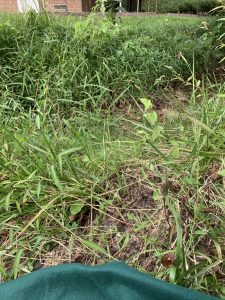 My sit spot overlooking Beale Creek.
My sit spot overlooking Beale Creek.
After I first arrived on campus a few weeks ago, I spent the majority of my free time wandering around campus. I was on a mission to find out where all the important buildings were, but more than anything, I was looking for places to take a break from my anxiety and soak in the natural beauty around me. When trying to select my sit spot, I played through a variety of options in my head. Finally, I settled on a spot not far from the visual arts center. My spot is on a flat, rocky, patch of ground only a few feet from Beale Creek, near the bridge. When scouting out locations, I had stopped here for about fifteen minutes to look at fish and microorganisms in the creek. I chose this spot due to its proximity to main campus and its biodiversity.
When I first sat down in my sit spot on Wednesday, I laid back, shut my eyes, and soaked in the warm rays peeking through the clouds on a chilly day. At first, I did not notice much going on around me. Although I have walked past this area many times, it wasn’t until I fully immersed myself in the situation that I picked up on the variety of plant life just inches away from my spot. Among the typical grasses and weeds one may find just about anywhere, I saw a species of knotweed referred to Oriental Lady’s Thumb. This plant varied between 6-12 inches high and had clusters of pinkish-purple flowers at the top of the stem. I was quite surprised to see a patch of orange Touch-me-nots growing alongside the creekbed, as I had only seen this flower in stores previously.
The creek itself was much lower than I have seen before. Further upstream from my sit spot, the creek had slowed to a point where it appeared to be at a standstill, with no detectable flow rate. Directly in front of me, there was little to no water in the bed. The only thing that hinted at the presence of water was thick, slimy mud covering a few large rocks in the bottom of the creek bed. Since the water level was so low, I was unable to see any fish or macroinvertebrates, which had originally drawn me to the spot. The only exception to the lack of aquatic life was the presence of water skimmers.
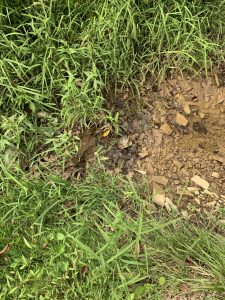 The water level of the creek.
The water level of the creek.
As mentioned previously, I saw very few organisms associated with the water itself. I did, however, see a wide range of life on dry land. After a few minutes of being at my spot, a small, white butterfly flew by and landed on flowers lining the creek. I am not an expert on butterflies, but given its color and size (roughly that of a quarter) it may have been a cabbage butterfly. The campus squirrels were up to their typical shenanigans. Behind me in a grove of trees, they jumped from branch to branch causing them to shake back and forth. It may be up for discussion, but the most interesting thing that happened while I sat in my spot was witnessing a murder. A murder of crows that is! They had flocked together in a small group and took flight, filling the air with the sounds of their cawing.
Over the rest of the semester, there are a few things I want to keep my eye on. I am interested in seeing the connections between the water level and the number of fish and macroinvertebrates present. The second is the growth and development of the blue lobelia growing on the bank. When I was there, the middle section was in bloom. The bottom looked as if it had already bloomed and had started to decay, while the top looked ready to bloom at any moment. A large bush of Amur honeysuckle was to the right of my sit spot. Currently, it was bright green leaves and shiny red berries. I am curious to see if and when the majority of these berries will drop to the ground or be eaten.

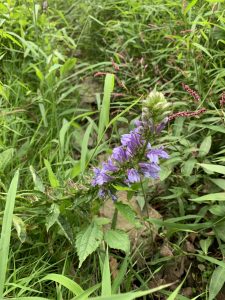 The Amur honeysuckle and blue lobelia.
The Amur honeysuckle and blue lobelia.

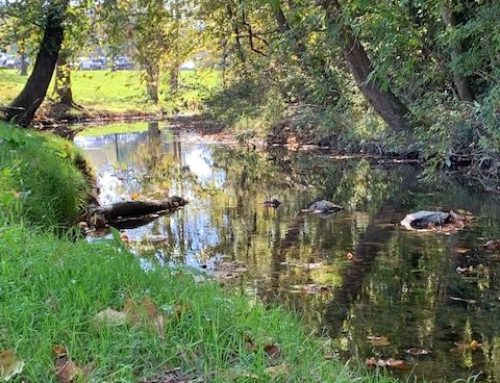
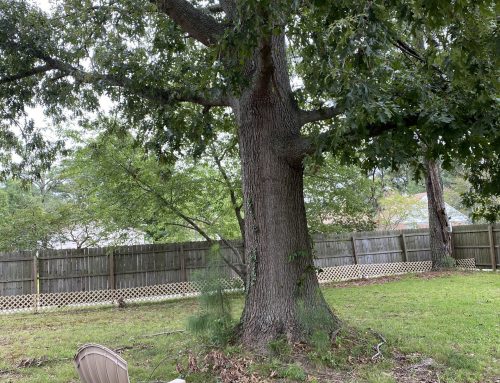
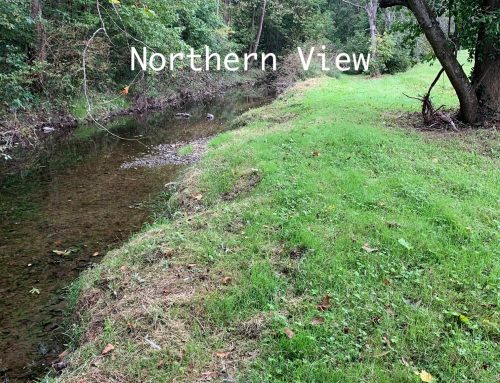
I enjoyed your post Katie – and you are already identifying some of the organisms you are seeing – good work! I am going to enjoy watching this space unfold with time through your eyes. Good work!